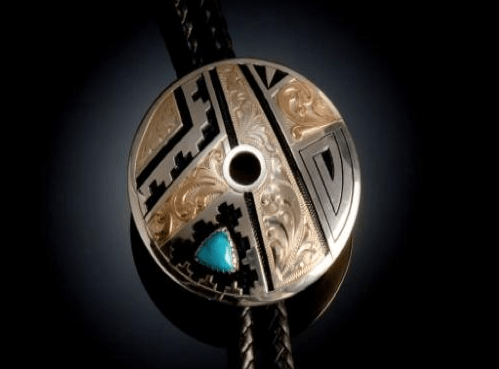If anything tells us about the originality and character of the southwest, it is the Bolo Tie.
According to the Heard Museum in Phoenix, Arizona, The bolo tie’s road to becoming Arizona’s official neckwear took place over several years. KOOL Channel 10’s anchor Bill Close and five other bolo tie enthusiasts met in 1966 at the Westward Ho Hotel in downtown Phoenix. From the beginning, their intent was to make the bolo tie a state emblem. After several unsuccessful attempts, a bill was finally passed on April 22, 1971 making the bolo tie the official state neckwear. The bolo tie is also the official neckwear of New Mexico and Texas, although Arizona was the first state to designate it as such.
History of the Bolo Tie
In 1978, Bola Bill Kramer author of “‘Bola Tie: New Symbol of the West” wrote how the bolo tie began. According to Kramer, Victor E. Cedarstaff, a silversmith who lived in Arizona in the 1940s and some of his cohorts, were chasing after wild horses when Cedarstaff’s silver-bordered hatband slipped off, making his hat fly away as well. He caught up with his hat band and slipped it over his neck for safekeeping. His friends noticed his look and complimented his new tie. Cedarstaff decided to create a line of ties inspired by the incident. He braided leather, placed silver tips on the ends to keep them from fraying and then joined the strands with a turquoise stone to be used as an adjustable clasp. He applied for a patent, calling his creation the bola tie, named after the boleadoras cords worn by Argentine cowboys.




